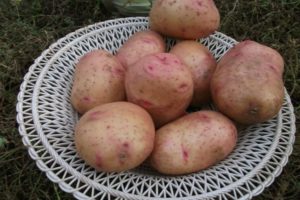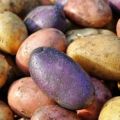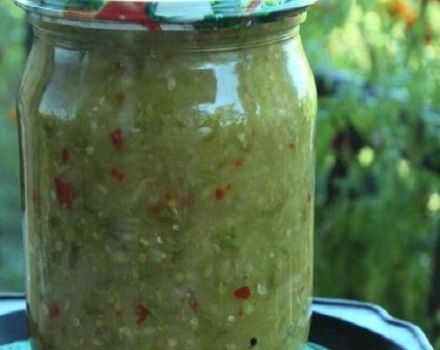Description of the Labella potato variety, features of cultivation and care
The early maturing, high-yielding potato Labella is the fruit of the labor of German breeders from the Solana company. The variety was included in the list of the State Register of Russia in 2011. Adapted to the climate of the Central, Central Black Earth, Volgo-Vyatka, Far Eastern and North Caucasian regions. Recommended for growing in personal plots, farmlands, industrial complexes. Labella is suitable for processing and sale. Excellent keeping quality and negligible scrap percentage eliminates the need to re-bulkhead the crop.
Description of the variety
Labella easily gets used to the proposed weather conditions, which is the reason for the spread of potatoes throughout the Russian territory. The description says that this variety belongs to the early ones.
A compact upright bush does not form spreading branches. The leaves are emerald green, small in size, with slight waviness at the edges. The root system is well developed. The plant blooms with miniature, pink-purple flowers.
The elongated-oval tubers have an average size and weight of 78-102 g. A thin, deep red rind hides a yellowish flesh with a starch content of up to 15%, which provides the potatoes with an average degree of digestibility. The eyes are superficial.
Keeping quality allows Labella to be transported over long distances. Marketability does not fall below 90%. The variety is valued for its high content of mineral salts, protein, B vitamins.
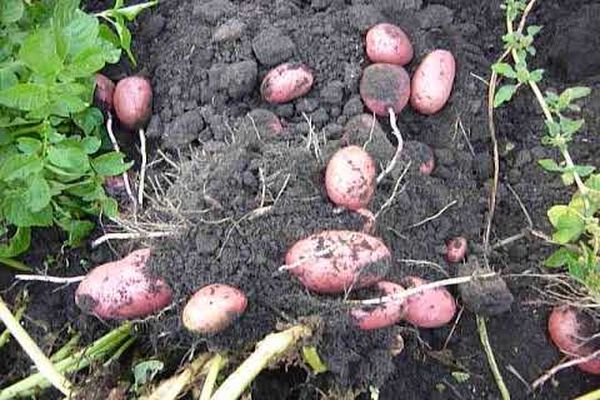
Marketability 91–92% and keeping quality 98% make Labella potatoes suitable for commercial cultivation.
Growing
Planting times of the Labella potato variety vary according to the climatic conditions of the area. However, agrotechnical measures are the same for any locality:
- Requirements to the soil: fertility, looseness, heat, moisture and air permeability.
- Sorting, bulkhead, germination of seed within three weeks.
- Selection of medium sized seeds. Large tubers are allowed to be divided into 2-3 parts.
- Landing is carried out to a depth of 8 cm.
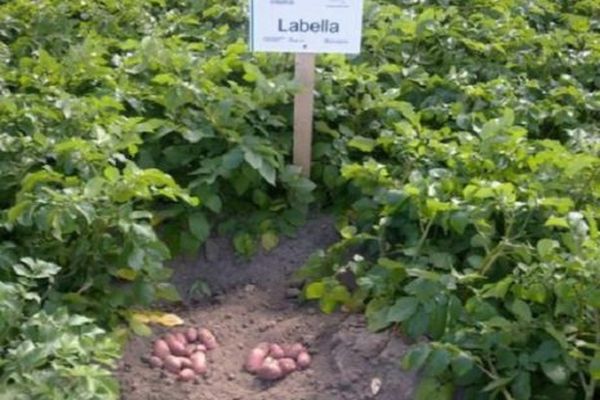
Care features
The successful development of culture is guaranteed by following the simplest recommendations:
- Hilling. Activates the formation of additional underground shoots, increasing the number of fruits by a third and improving the quality. In addition, they protect potatoes during spring frosts.
- Loosening. Provides air flow to root crops and cleans the soil of weeds. This procedure should be carried out superficially, with a rake and as early as possible.
- Top dressing. Urea and a special agent The solution is introduced when planting seeds in the soil.During the budding period, a solution of potassium sulfate is used. The third feeding is required for flowering plants in order to stimulate tuberization. Mullein or bird droppings applied to well-moistened soil are suitable for this.
- Watering. Only needed during drought. Each bush needs 12-15 liters of water.
- Protection against diseases and pests. Relevant when the first signs of damage appear. An effective way: spray the plants with a mixture of superphosphate and copper perchloric acid or Bordeaux liquid.
It is important to accurately determine the start date of the harvest. Otherwise, the quality of the tubers may decrease, and some of the potatoes may deteriorate.
Advantages and disadvantages
Properties of this variety of potatoes:
- Equal mass of tubers.
- Unpretentious care. There are no special requirements and peculiarities of culture.
- High yields.
- Drought resistance. The Labella variety is not afraid of an increase in temperature.
- Great taste.
- Excellent product characteristics. This potato is good for both personal consumption and sale.
- Root crops are well stored and can withstand long-term transportation.
- Resistant to common nightshade diseases.
- Growing for processing.
- Reduced starchiness.
- The presence of B vitamins, protein and mineral salts in large quantities.
- Does not need to re-bulkhead the harvested crop.
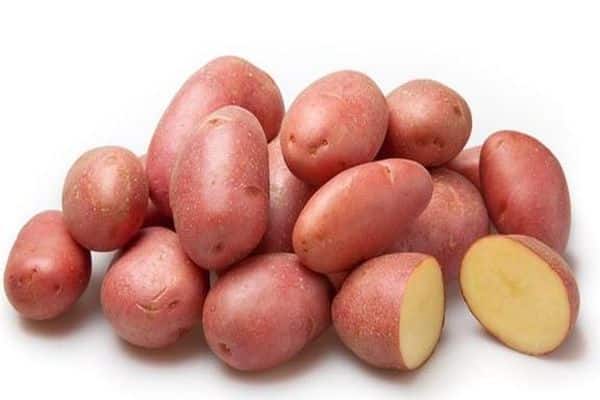
The only drawback of Labella potatoes is the fear of low temperatures.
Pests and diseases
Most of the specific diseases Labella is not affected: it is resistant to cancer, tuber rot, viruses. Occasionally affected by tobacco mosaic and leaf rolling. Still, it's best not to neglect preventive treatments. Infected plants are not suitable for collecting seed, they are burned together with the tubers. Only high quality seeds produce good yields.
Solanaceae are attractive to the wireworm and the Colorado potato beetle. When digging potatoes small fruits must be discarded, as a rule, which are the habitat of insects.
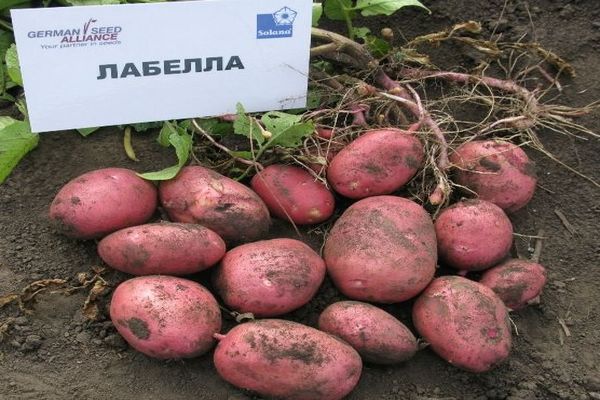
Harvesting and storage
The characteristic of the Labella variety includes the resistance of tubers to mechanical damage. Wounds caused by hitting with a hoe or a harvester are healed and the presentation of the potato does not suffer. Despite this, it is best for agricultural enterprises and farmers to use side digging combines for harvesting. Potatoes harvested in clear weather are dried right on the site, on rainy days drying under a canopy is shown.
The harvest of German potatoes is represented by externally attractive tubers of pleasant taste. Can be sold as an early vegetable or stored.
Variety Labella is not afraid of an increase in temperature and illiterate care. This provides him with nationwide recognition, especially for inexperienced gardeners.
Storing potatoes is shown in a cool, dry place. Suitable for sale immediately after harvest and after months of storage.

